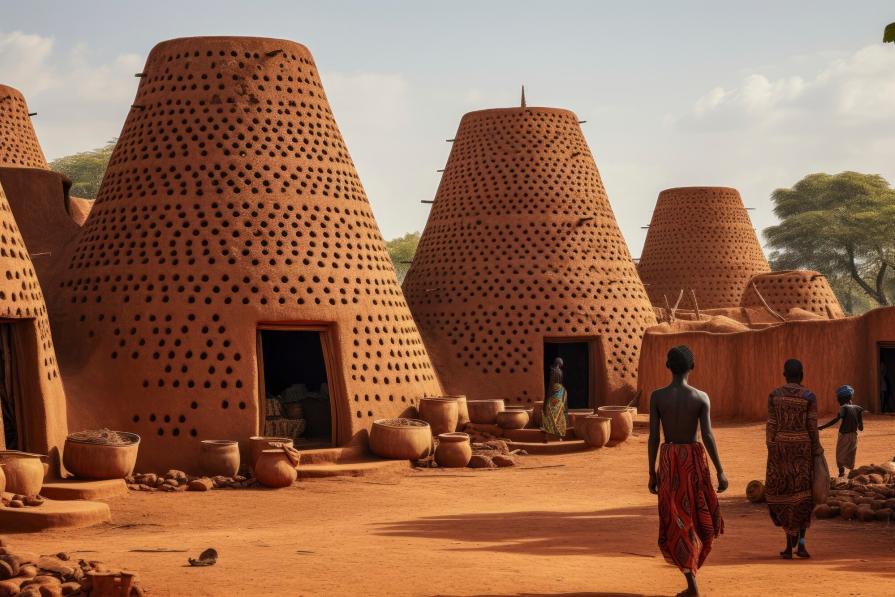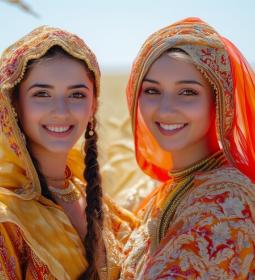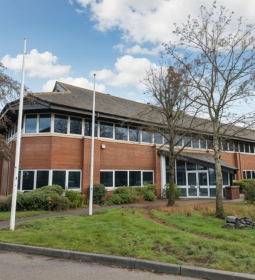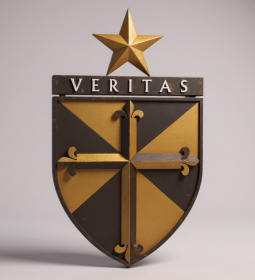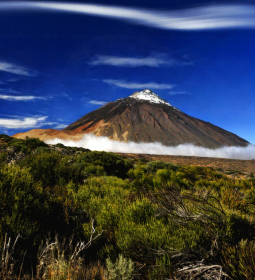Africa is a continent that occupies 20% of the entire land area of our planet. Its area is 30.3 million square kilometers! Most people perceive Africa as a huge safari site, but not a country with its own flavor and a huge number of architectural attractions. There are 54 countries on the continent, the sights of which SMAPSE experts will tell you about today. They are sure that can surprise!
- Algeria, the Clay Palace in Gardai - a structure built of sand and clay, reminiscent of the work of Antoni Gaudí.
- Angola, Currency Museum - located next to the National Bank and symbolizes modern architectural technology.
- Benin, Tata houses of the Somba tribe - houses of a tribe famous for their construction craft. One-, two- and three-story buildings that women paint with symbols of fertility.
- Botswana, Temple of the International Community of Krishna is the only Krishna temple in the country.
- Burkina Faso, Grusi houses in Tiebela - houses that are built from clay, bean varnish, chalk and coal by men and signed by women. Some are residential, some are mausoleums.
- Burundi, Champignon - Bauhaus-style houses that appeared here in the middle of the 20th century and resemble champignon.
- Gabon, Ministry of Fuel and Carbon is a government building located in the center of the country and an outstanding example of modern architecture.
- Gambia, National Assembly - a building that opened in 2014: its construction cost 25 million $ and can simultaneously accommodate 400 people.
- Ghana, One Office Center Airport Square is a building located in the capital of the country - Accra. Its design resembles giant honeycombs or patterns on ethnic fabrics. The building contributes to the environment with rainwater tanks and solar panels.
- Guinea, Casa Palabres - a building with modest facades, but intricate paintings inside. Its original function is as a meetinghouse for elders.
- Guinea-Bissau, People's Palace - 102 people who are part of the national assembly of the country, sit in this building resembling a volcano.

- Democratic Republic of the Congo, Leschanger Tower - Kinshasa's two - hundred - meter Eiffel Tower, built in 1978 and decorated with works by local artists.
- Djibouti, Afar huts - traditional Afar dwellings, similar to yurts.
- Egypt, Cairo Citadel - a fortress built in the XII century and protecting the country from the attacks of the Crusaders, today it works as a museum, mosque and palace.
- Zambia, Cathedral of the Holy Cross - Anglican church resembling a water tower.
- Zimbabwe, East Gate Center is a building that does not require air ducts, fans and is equipped with a natural lighting system.
- Cape Verde, Palacio do Povo - a palace built at the end of the 19th century in the Portuguese colonial style.
- Cameroon, Reunification Monument - A monument commemorating the reunification of divided Cameroon in 1960. Different colors are symbols of different parts of the country.
- Kenya, African Heritage House is a cultural hub dedicated to the arts and culture of the country.
- Comoros, the Great Mosque of Iconi - a mosque, a white pearl towering on the coast of the Comoros.
- Congo, Nabemba Tower - The tallest building in the Congo, built in 1986.
- Côte d'Ivoire, St. Paul's Cathedral is a catholic cathedral built in a futuristic style in Abidjan. Inside there are frescoes and mosaics with biblical subjects.
- Lesotho, Mokorotlo - Museum of culture of the Basotho people in the form of a spit-throat, Basotho headdress
- Liberia, Grand Masonic Lodge - Lodge meeting building renovated in 2018.
- Libya, Leptis Magna is an ancient Roman city on the Mediterranean coast, during the excavations of which a basilica, an arch and an amphitheater were found. Since 1981 it has been a UNESCO World Heritage Site.
- Mauritius, Tien Tan Pagoda - Built in 1950, a place of worship for the country's Chinese Buddhists.
- Mauritania, The Stone Tower at Chinguetti is a tall stone tower whose original function was a haven for merchants crossing the desert. UNESCO World Heritage Site.

- Madagascar, Royal Palace in Antananarivo - fortress and royal residence, built in the second half of the 19th century. The building is interesting because it can be seen from anywhere in the city.
- Malawi, Mua Mission Center is a cultural center, library and museum reflecting the heritage of the Yao, Chewa and Nguni peoples.
- Mali, Jenne Great Mosque is the largest adobe building in the world, built in 1907.
- Morocco, Bab Mansour Gate - a gate built in 1732 in honor of the architect Mansour.
- Mozambique, St. Anthony's Church is a modernist, unusual building for a temple, reminiscent of a juicer. Built in 1962, the style is defined as a mixture of Mexican and Expressionism.
- Namibia, Church of Christ is a building built of quartz and sandstone in a mixture of Art Nouveau and Gothic styles.
- Niger, The Hikma Religious Complex is a former Danaji Mosque, converted into a religious center for people of all faiths.
- Nigeria, National Theater - a building built in 1977 that resembles a Nigerian military ID (yes, experts were surprised too). Height - 30 meters.
- Rwanda, Royal Hut is a recreated royal residence from the time when Nyanza was the country's capital.
- Sao Tome and Principe, Agua Ise is a village around the thriving cocoa and coffee plantations of the 19th century.
- Swaziland, Hive huts are dome-shaped houses covered with grass. Thanks to this shape and materials, they perfectly save residents from heat and rain.
- Seychelles, Temple of Arul Mihu Navasakti Vinayagar is the only Hindu temple in the country, built in 1992.
- Senegal, The Great Mosque in Touba is one of the largest and most beautiful mosques in the country, built in the 19th century.
- Somalia, the tomb of the unknown soldier - an obelisk dedicated to the soldiers who died in the ongoing war since 1988.
- Sudan, Pyramids of Meroe - the tombs of African monarchs, included in the UNESCO World Heritage List.
- Sierra Leone, Martell Tower - a fortification built in the 19th century, today it is a national monument.
- Tanzania, Ishranshi Infirmary in Zanzibar - a building built in a mixture of European, African and Arab cultures by order of a wealthy Indian merchant.

- Togo, the Tower Houses of the Takaenta in Kutammaku are adobe houses, thanks to which the city received the status of a UNESCO World Heritage Site.
- Tunisia, Hotel Du Lac is an abandoned hotel built in the middle of the 20th century in the shape of an inverted pyramid and in a brutalist style.
- Uganda, the burial place of the kings of Buganda in Kasubi - a tomb palace, built in 1882 from straw, wood, reeds and clay.
- Central African Republic, Notre Dame Cathedral in Bangui - Cathedral in honor of the Immaculate Conception of the Virgin Mary, built in the middle of the 20th century.
- Chad, adobe houses in Gauja - houses made of earth and straw, decorated with paintings on the walls and on the ground near the house.
- Equatorial Guinea, Freedom Tower - Built in 2011, a symbol of independence from Spain in the 1960s.
- Eritrea, Fiat Tagliero is a service station that looks similar to examples of traditional African architecture. In 2017, it received the status of a UNESCO World Heritage Site.
- Ethiopia, Lideta Shopping Center Mercato - a building that received the Versailles Prize and recognized as the best shopping center in the world.
- South Africa, Zeitz Museum of Contemporary African Art - Opened in 2017, the museum claims to be the world's first large museum entirely dedicated to contemporary art.
- South Sudan, Tukeli - traditional topos huts - were built of straw, bushes and twine.

